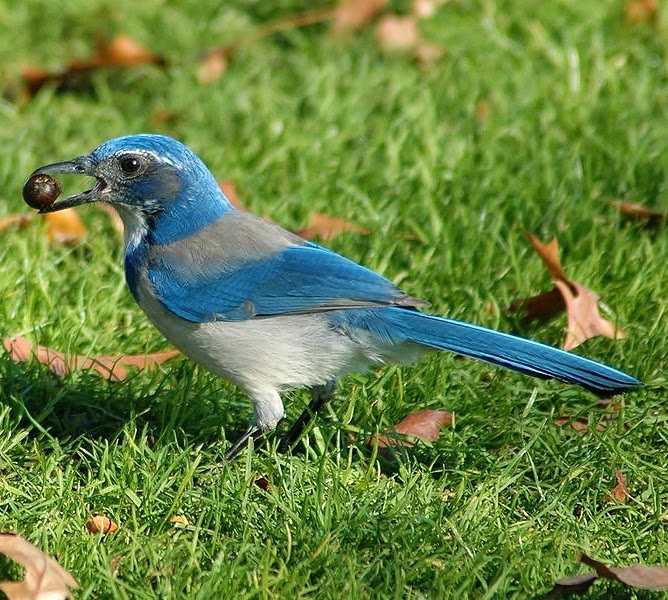 |
| (Photo from Wikipedia) |
Common name:
western scrub-jay (en); gaio-da-Califórnia (pt); geai buissonnier (fr); chara californiana (es); Kalifornienhäher (de)
Taxonomy:
Order Passeriformes
Family Corvidae
Range:
This species is found in the western United States, from Oregon to Wyoming and south to southern California and Texas, and also in Mexico as far south as Oaxaca.
Size:
These birds are 27-31 cm long and have a wingspan of about 40 cm. They weigh 70-100 g.
Habitat:
The western scrub-jay is mostly found in dry scrublands, but also uses open woodlands and tropical moist forests, mangroves, and rural and sub-urban gardens. They are present from sea level up to an altitude of 3.000 m.
Diet:
During spring and summer they feed mainly on insects, fruits, small vertebrates such as frogs and lizards, and the eggs of other birds. During autumn and winter they feed mostly on nuts, seeds, grains and berries.
Breeding:
Western scrub-jays breed in March-July. The nest is built by both sexes, consisting of a sturdy basket made of twigs, lined with rootlets, fine strands of plant fibres, and livestock hair. The nest is placed on a tree or scrub, 1-10 m above the ground. The female lays 1-5 pale green or pale grey eggs with brown and olive blotches, which she incubates alone for 16-19 days. The chicks fledge 17-19 days after hatching. Each pair raises a single brood per season.
Conservation:
IUCN status – LC (Least Concern)
This species has a very large breeding range and a global population estimated at 2 million individuals. The population is suspected to be stable in the absence of evidence for any declines or substantial threats.







